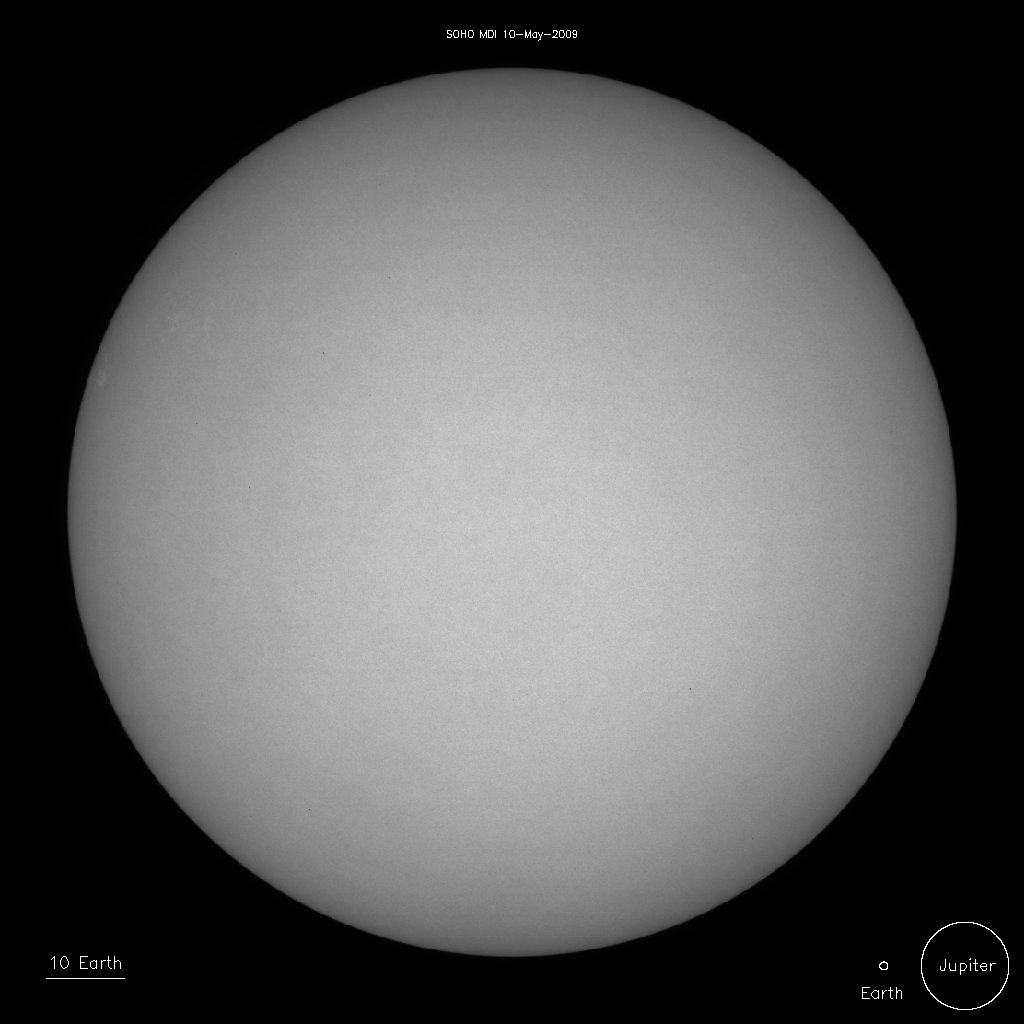we've been kinda low on sunspots for a while as we hit the inter-cycle low;
however, I heard rumours from Iceland that Aurora Borealis had been seen, so I scooted over to Soho to look see
UPDATE: nope, still no sunspots

Couple of nice spot complexes in the upper left.
Haven't checked the polarity to see if they are actually part of the new cycle, but it is likely they are.
Now we'll see if they're one off, or start of a trend...
Silly me, should have checked the other images,
I saw the emission line images and jumped on the magnetogram
Duh...
Here is the visible light image - no spots where the magnetic loops are
bummer.
More like this
By popular request sunspot has his/her own thread. This is the only thread that sunspot can post to, and all replies to any comment to sunspot should go here.
As well as Chapman's silly ice-age article, the Australian published a news story about it, treating it
The Sun undergoes quasi-periodic cycles of 22 years, which manifest most observably as 11 year sunspot cycles.
There have been 23 of these 11 year cycles in recorded history, going back to about 1750.
The Sun is doing something interesting, and has been for the last few years. As a solar physicist noted last year, there really haven't been many sunspots lately. Look at 2001 (left) and 2009 (right) for the difference in sunspot activity.


There are NO sunspots visible today - this is a magnetogram showing the solar field configuration; we only talk about sunspots when local cooling and thus dark spots visible in white light result. So the waiting continues
You don't need sunspots to get aurora borealis, either. It helps to have solar activity, but the Earth's magnetosphere can produce spectacular aurora on its own. I know some people associated with the THEMIS mission and have read some of their papers--they have recorded some spectacular aurora in the two years the mission has been operating. The reason it's unusual to see visible aurora in May is because the long summer twilight tends to drown it out, but put a satellite with particle sensors in the right place and it will see the electrons that cause the aurora, no matter what time of year it is.
yup, I heard about the spectacular aurora, and thought maybe there had been some solar activity - saw the emission line pics on Soho and grabbed the magnetogram, but somehow didn't look at the visible images
my mistake
In the magnetogram, are the dark areas shadows of the lighter areas (or vice-versa)? For the two large light/dark spots in the upper left, the neighboring dark/light spots look to have pretty much the same shape. You can also see similar pairs with the more noticeable small spots, particularly the two pairs in the upper middle section.
you're seeing local magnetic field loops - so always paired
Try http://spaceweather.com/ - they consolidate a lot of the publicly available info from multiple platforms.